Bollworms
go.ncsu.edu/readext?646276
en Español / em Português
El inglés es el idioma de control de esta página. En la medida en que haya algún conflicto entre la traducción al inglés y la traducción, el inglés prevalece.
Al hacer clic en el enlace de traducción se activa un servicio de traducción gratuito para convertir la página al español. Al igual que con cualquier traducción por Internet, la conversión no es sensible al contexto y puede que no traduzca el texto en su significado original. NC State Extension no garantiza la exactitud del texto traducido. Por favor, tenga en cuenta que algunas aplicaciones y/o servicios pueden no funcionar como se espera cuando se traducen.
Português
Inglês é o idioma de controle desta página. Na medida que haja algum conflito entre o texto original em Inglês e a tradução, o Inglês prevalece.
Ao clicar no link de tradução, um serviço gratuito de tradução será ativado para converter a página para o Português. Como em qualquer tradução pela internet, a conversão não é sensivel ao contexto e pode não ocorrer a tradução para o significado orginal. O serviço de Extensão da Carolina do Norte (NC State Extension) não garante a exatidão do texto traduzido. Por favor, observe que algumas funções ou serviços podem não funcionar como esperado após a tradução.
English
English is the controlling language of this page. To the extent there is any conflict between the English text and the translation, English controls.
Clicking on the translation link activates a free translation service to convert the page to Spanish. As with any Internet translation, the conversion is not context-sensitive and may not translate the text to its original meaning. NC State Extension does not guarantee the accuracy of the translated text. Please note that some applications and/or services may not function as expected when translated.
Collapse ▲ Bollworm, also called corn earworm and soybean podworm, can be a significant square and boll-damaging pest of cotton in North Carolina, especially following foliar insecticide sprays for other insects. This species emerges from the soil as a moth in early to mid-May and completes at least two generations, primarily in wild hosts and field corn, before flying to blooming cotton and soybeans.
Bollworm, also called corn earworm and soybean podworm, can be a significant square and boll-damaging pest of cotton in North Carolina, especially following foliar insecticide sprays for other insects. This species emerges from the soil as a moth in early to mid-May and completes at least two generations, primarily in wild hosts and field corn, before flying to blooming cotton and soybeans.
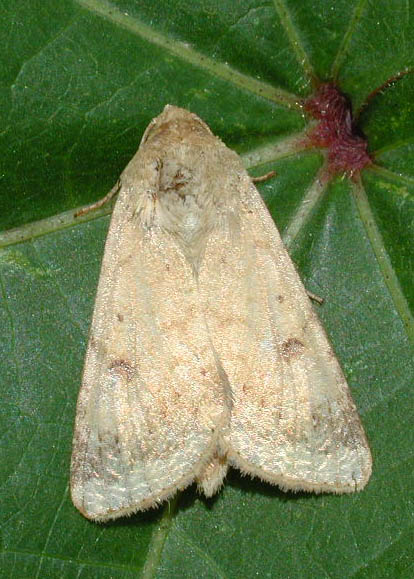 Cotton lines that have been genetically altered to express a toxin of Bacillus thuringiensis (Bt) have been available to North Carolina producers since 1996. These lines are also referred to as Bollgard II, Bollgard 3, TwinLink, TwinLink Plus, WideStrike, and WideStrike 3 varieties, with some expressing up to three Bt toxins. Bt varieties will not control insect pests other than caterpillars; for instance, thrips, cotton aphids, plant bugs, and stink bugs. Also, different caterpillar pests are not controlled to the same degree. For example, tobacco budworms attempting to feed on Bt varieties have shown zero survival in the field while other caterpillar pests, such as beet and fall armyworms and cabbage and soybean loopers that may be present at low levels, are no longer economic pests. In contrast, bollworms can become established, especially if a prior “disruptive” spray has been used that reduces or eliminates beneficial arthropods. Finally, only limited control of cutworms is provided by the Bt toxins, at least in part because cutworms are often partially to fully grown when cotton seedlings are available in the spring.
Cotton lines that have been genetically altered to express a toxin of Bacillus thuringiensis (Bt) have been available to North Carolina producers since 1996. These lines are also referred to as Bollgard II, Bollgard 3, TwinLink, TwinLink Plus, WideStrike, and WideStrike 3 varieties, with some expressing up to three Bt toxins. Bt varieties will not control insect pests other than caterpillars; for instance, thrips, cotton aphids, plant bugs, and stink bugs. Also, different caterpillar pests are not controlled to the same degree. For example, tobacco budworms attempting to feed on Bt varieties have shown zero survival in the field while other caterpillar pests, such as beet and fall armyworms and cabbage and soybean loopers that may be present at low levels, are no longer economic pests. In contrast, bollworms can become established, especially if a prior “disruptive” spray has been used that reduces or eliminates beneficial arthropods. Finally, only limited control of cutworms is provided by the Bt toxins, at least in part because cutworms are often partially to fully grown when cotton seedlings are available in the spring.
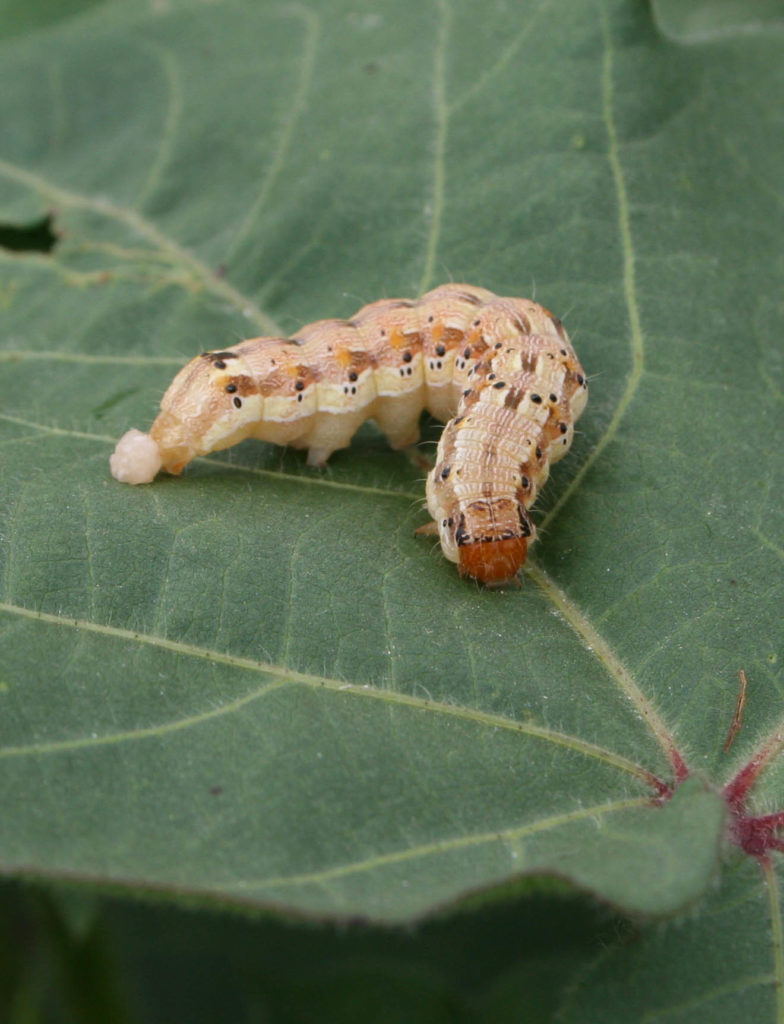 Since 2016, bollworm resistance has been widespread in Bollgard II, TwinLink, and WideStrike varieties, but not in Bollgard 3, TwinLink Plus, and WideStrike 3 varieties. As a result, scouting and control recommendations vary. All varieties should be scouted regularly when any sort of adult moth activity is detected, but especially during major flight events; these usually occur in mid-July (southern counties) to late July or early August (northern counties), but can be determined using the NC State Extension Light Trap Data network. A good indication of when the major flight begins can be confirmed by a significant increase in light or pheromone trap captures, or the presence of freshly emerged bollworm moths in the field or around field edges. Regular, systematic scouting is essential since plant compensation for boll damage at this time of year is minimal, and caterpillar feeding, especially on bolls, can dramatically reduce yields.
Since 2016, bollworm resistance has been widespread in Bollgard II, TwinLink, and WideStrike varieties, but not in Bollgard 3, TwinLink Plus, and WideStrike 3 varieties. As a result, scouting and control recommendations vary. All varieties should be scouted regularly when any sort of adult moth activity is detected, but especially during major flight events; these usually occur in mid-July (southern counties) to late July or early August (northern counties), but can be determined using the NC State Extension Light Trap Data network. A good indication of when the major flight begins can be confirmed by a significant increase in light or pheromone trap captures, or the presence of freshly emerged bollworm moths in the field or around field edges. Regular, systematic scouting is essential since plant compensation for boll damage at this time of year is minimal, and caterpillar feeding, especially on bolls, can dramatically reduce yields.
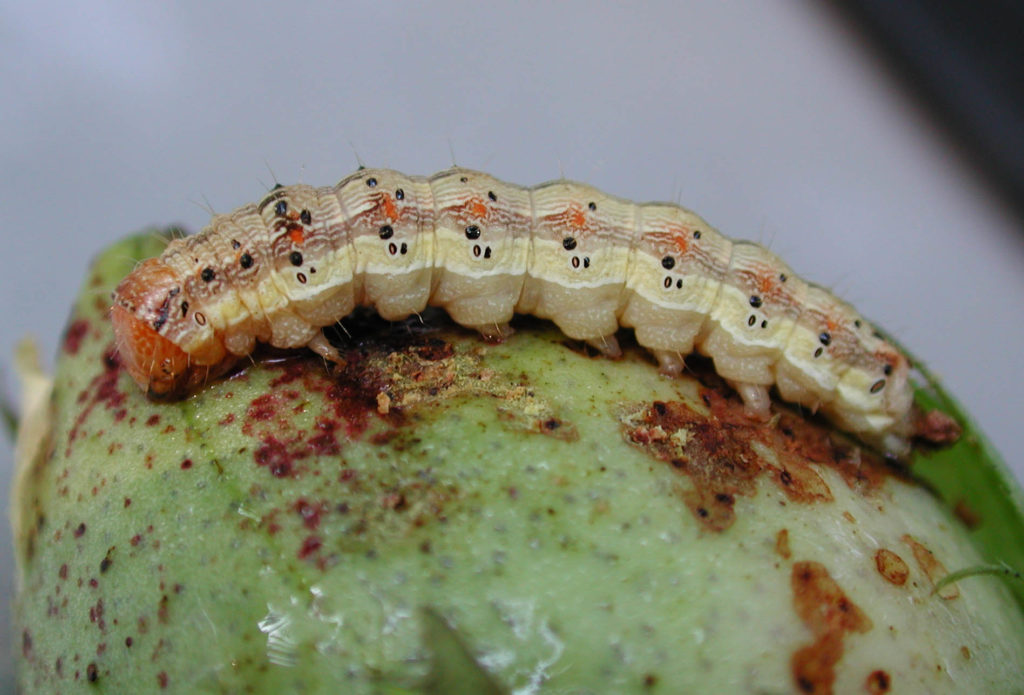 For Bollgard II, TwinLink, and WideStrike varieties, thresholds should be triggered based on the presence of eggs before neonate (recently hatched) bollworms are present. There is no visual way to distinguish bollworm and tobacco budworm eggs so scouts should pay close attention to the species of moths present in the field. Moreover, tobacco budworms usually infest fields a little earlier than bollworm.For Bollgard 3, TwinLink Plus, and WideStrike 3 varieties, the presence of eggs or first-stage bollworms can be used as an indication of potential pressure to help gauge scouting frequency. Neonate (recently hatched) bollworms must feed on the cotton plant before they ingest a lethal amount of the Bt toxin, so these should never be used as a trigger point to spray. Scouts should direct their attention to detecting and recording square damage, damage to small bolls, or second-stage bollworms. Thus, it is essential both to recognize the difference between first (neonate) and second bollworm stages (second stage bollworms will be greater than 1/8-inch in length) and also to identify the difference between insignificant, superficial square damage and damage that will cause the square to abort. Scouting only large bolls or large-sized bollworms can lead to significant yield losses if these populations exceed threshold and are not sprayed.
For Bollgard II, TwinLink, and WideStrike varieties, thresholds should be triggered based on the presence of eggs before neonate (recently hatched) bollworms are present. There is no visual way to distinguish bollworm and tobacco budworm eggs so scouts should pay close attention to the species of moths present in the field. Moreover, tobacco budworms usually infest fields a little earlier than bollworm.For Bollgard 3, TwinLink Plus, and WideStrike 3 varieties, the presence of eggs or first-stage bollworms can be used as an indication of potential pressure to help gauge scouting frequency. Neonate (recently hatched) bollworms must feed on the cotton plant before they ingest a lethal amount of the Bt toxin, so these should never be used as a trigger point to spray. Scouts should direct their attention to detecting and recording square damage, damage to small bolls, or second-stage bollworms. Thus, it is essential both to recognize the difference between first (neonate) and second bollworm stages (second stage bollworms will be greater than 1/8-inch in length) and also to identify the difference between insignificant, superficial square damage and damage that will cause the square to abort. Scouting only large bolls or large-sized bollworms can lead to significant yield losses if these populations exceed threshold and are not sprayed.
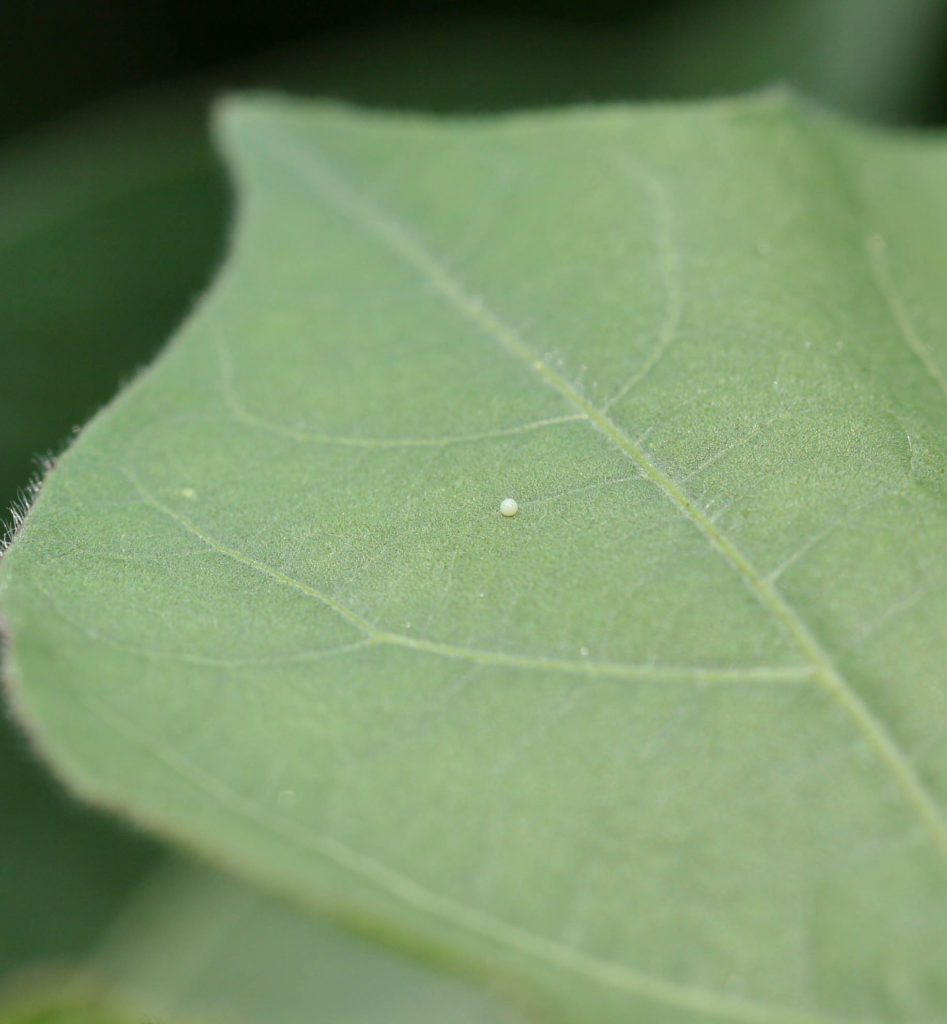 When scouting a cotton field for bollworm larvae, cover all major areas in the field. When looking for eggs, begin by 25 to 100 randomly selected leaves or fruiting structures, being sure not to neglect scouting leaves in the canopy where blooms are present. Bollworm moths lay eggs within the canopy, following blooms up the plant during the season. For larvae, inspect 100 randomly selected squares and 100 bolls from throughout the field (more detail in following paragraph). Pay particular attention to bollworm larvae associated with blooms and bloom tags.
When scouting a cotton field for bollworm larvae, cover all major areas in the field. When looking for eggs, begin by 25 to 100 randomly selected leaves or fruiting structures, being sure not to neglect scouting leaves in the canopy where blooms are present. Bollworm moths lay eggs within the canopy, following blooms up the plant during the season. For larvae, inspect 100 randomly selected squares and 100 bolls from throughout the field (more detail in following paragraph). Pay particular attention to bollworm larvae associated with blooms and bloom tags.
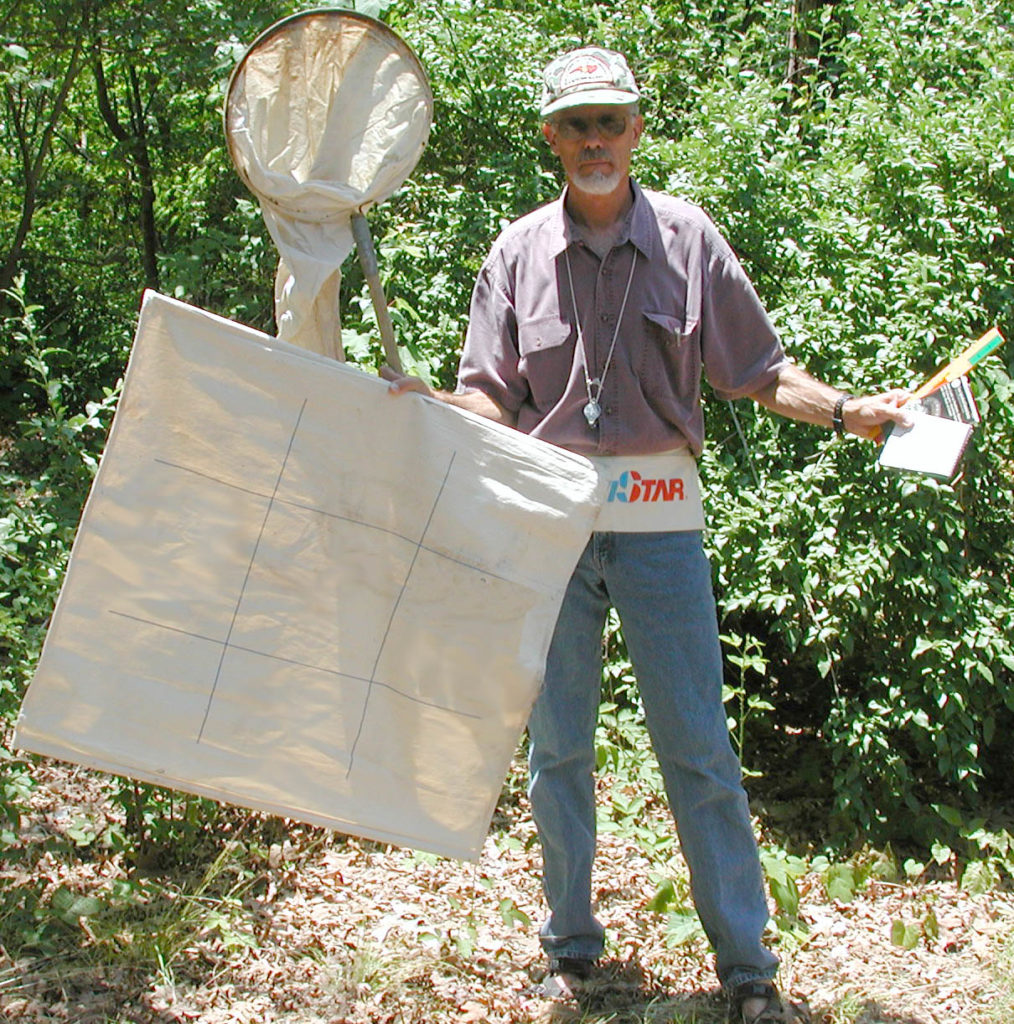 Bollworm larvae that become established on Bt cotton are often associated with pink blooms and bloom tags. Remember to sample these particular fruiting forms in proportion to their occurrence in the overall boll population. If a higher proportion of pink blooms and bloom tags is sampled, bollworm thresholds must be raised accordingly. Bloom tags should not be oversampled either, since bollworm larvae are thought to survive because they can avoid some of the Bt toxins produced by the plant. Likewise, do not sample obviously damaged or flared squares. Again the boll sampling for larvae should consist of bloom tags, small bolls, and large bolls in the proportion that they occur in the field. It may be easier to keep track of this ratio by sampling and retaining 10 squares and 10 bolls while walking, then stopping within the field to evaluate the fruit. This process would be repeated 10 times for a total of 100 squares and 100 bolls. A cloth nail pouch with two sides (one side for squares and the other for bolls) makes a handy container for carrying possible damaged fruit (some damage is obvious and some may require a closer inspection at your stop). Nail pouches are available at most hardware stores.
Bollworm larvae that become established on Bt cotton are often associated with pink blooms and bloom tags. Remember to sample these particular fruiting forms in proportion to their occurrence in the overall boll population. If a higher proportion of pink blooms and bloom tags is sampled, bollworm thresholds must be raised accordingly. Bloom tags should not be oversampled either, since bollworm larvae are thought to survive because they can avoid some of the Bt toxins produced by the plant. Likewise, do not sample obviously damaged or flared squares. Again the boll sampling for larvae should consist of bloom tags, small bolls, and large bolls in the proportion that they occur in the field. It may be easier to keep track of this ratio by sampling and retaining 10 squares and 10 bolls while walking, then stopping within the field to evaluate the fruit. This process would be repeated 10 times for a total of 100 squares and 100 bolls. A cloth nail pouch with two sides (one side for squares and the other for bolls) makes a handy container for carrying possible damaged fruit (some damage is obvious and some may require a closer inspection at your stop). Nail pouches are available at most hardware stores.
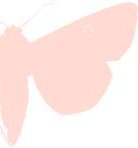 Once-a-week scouting leading up to the major bollworm moth flight is usually adequate. At this point, scouting should be done weekly, or more often in a smaller subsample of fields. Scouting frequency should be adjusted according to the moth pressure, the susceptibility of the crop, the variety (and associated Bt toxins produced), environmental conditions, and the damage risk the producer is willing to take. Given the varietal, planting date, soil, and fertility differences among fields, both the attractiveness and susceptibility of a field to insects and the period during which the field remains vulnerable to late-season insects may vary greatly. Generally late-planted, lush, rank fields are both more attractive and vulnerable to late-season insect damage and may require a more extended period of scouting and protection.
Once-a-week scouting leading up to the major bollworm moth flight is usually adequate. At this point, scouting should be done weekly, or more often in a smaller subsample of fields. Scouting frequency should be adjusted according to the moth pressure, the susceptibility of the crop, the variety (and associated Bt toxins produced), environmental conditions, and the damage risk the producer is willing to take. Given the varietal, planting date, soil, and fertility differences among fields, both the attractiveness and susceptibility of a field to insects and the period during which the field remains vulnerable to late-season insects may vary greatly. Generally late-planted, lush, rank fields are both more attractive and vulnerable to late-season insect damage and may require a more extended period of scouting and protection.
 When lateral squares and blooms have become difficult to find (a few squares and blooms will sometimes remain in the terminals, even when cotton has “cut out” and is no longer susceptible to bollworms), scouting for bollworms can be stopped. Likewise, when cotton plants have an average of 3 nodes or fewer remaining above the uppermost first position white bloom or when the upper bolls that will be harvested have become difficult to cut with a pocket knife (approximately 3 to 4 weeks after bloom), they are normally also impervious to bollworm and stink bug damage. Spot scouting for late bollworms may continue through early to mid-September in fields of late-maturing cotton or in green areas of the field, if these areas make up a significant portion of the field. Bollworm (and other late-season insects) thresholds should be raised as the boll population matures through the season. Try to preserve beneficial insect levels prior to bollworm infestations by scouting and treating for pests only when needed and by using more selective insecticides. Higher beneficial insect numbers may lead to more effective aphid and other insect pest suppression, including bollworm, but only if insecticides are used minimally.
When lateral squares and blooms have become difficult to find (a few squares and blooms will sometimes remain in the terminals, even when cotton has “cut out” and is no longer susceptible to bollworms), scouting for bollworms can be stopped. Likewise, when cotton plants have an average of 3 nodes or fewer remaining above the uppermost first position white bloom or when the upper bolls that will be harvested have become difficult to cut with a pocket knife (approximately 3 to 4 weeks after bloom), they are normally also impervious to bollworm and stink bug damage. Spot scouting for late bollworms may continue through early to mid-September in fields of late-maturing cotton or in green areas of the field, if these areas make up a significant portion of the field. Bollworm (and other late-season insects) thresholds should be raised as the boll population matures through the season. Try to preserve beneficial insect levels prior to bollworm infestations by scouting and treating for pests only when needed and by using more selective insecticides. Higher beneficial insect numbers may lead to more effective aphid and other insect pest suppression, including bollworm, but only if insecticides are used minimally.

Bollworm Thresholds
Bollgard II, TwinLink, WideStrike:
- 25 total eggs on 100 leaves or fruiting structures (search throughout the canopy on multiple plants)
Bollgard 3, TwinLink Plus, WideStrike 3:
- 4% damaged bolls
OR
- 3 live second-stage bollworms (1/8 inch or longer) per 100 fruit (pay particular attention to bollworms in or under yellow, pink, or dried blooms stuck to young bolls), or
- 2 second-stage bollworms on 2 consecutive scouting trips, or
- 1 second-stage bollworm on 3 consecutive scouting trips



